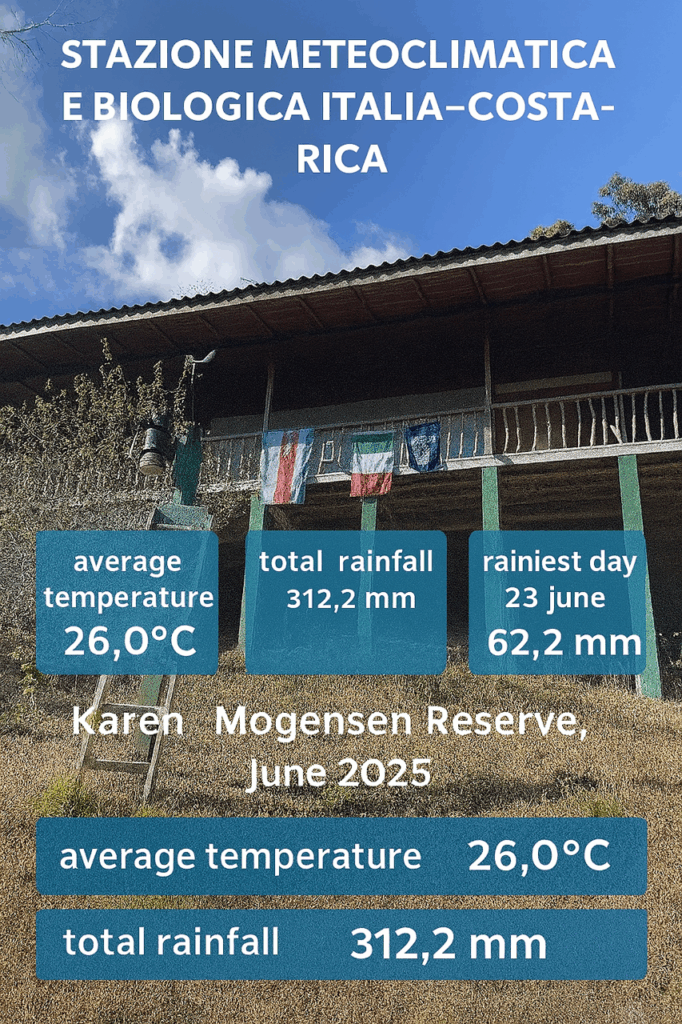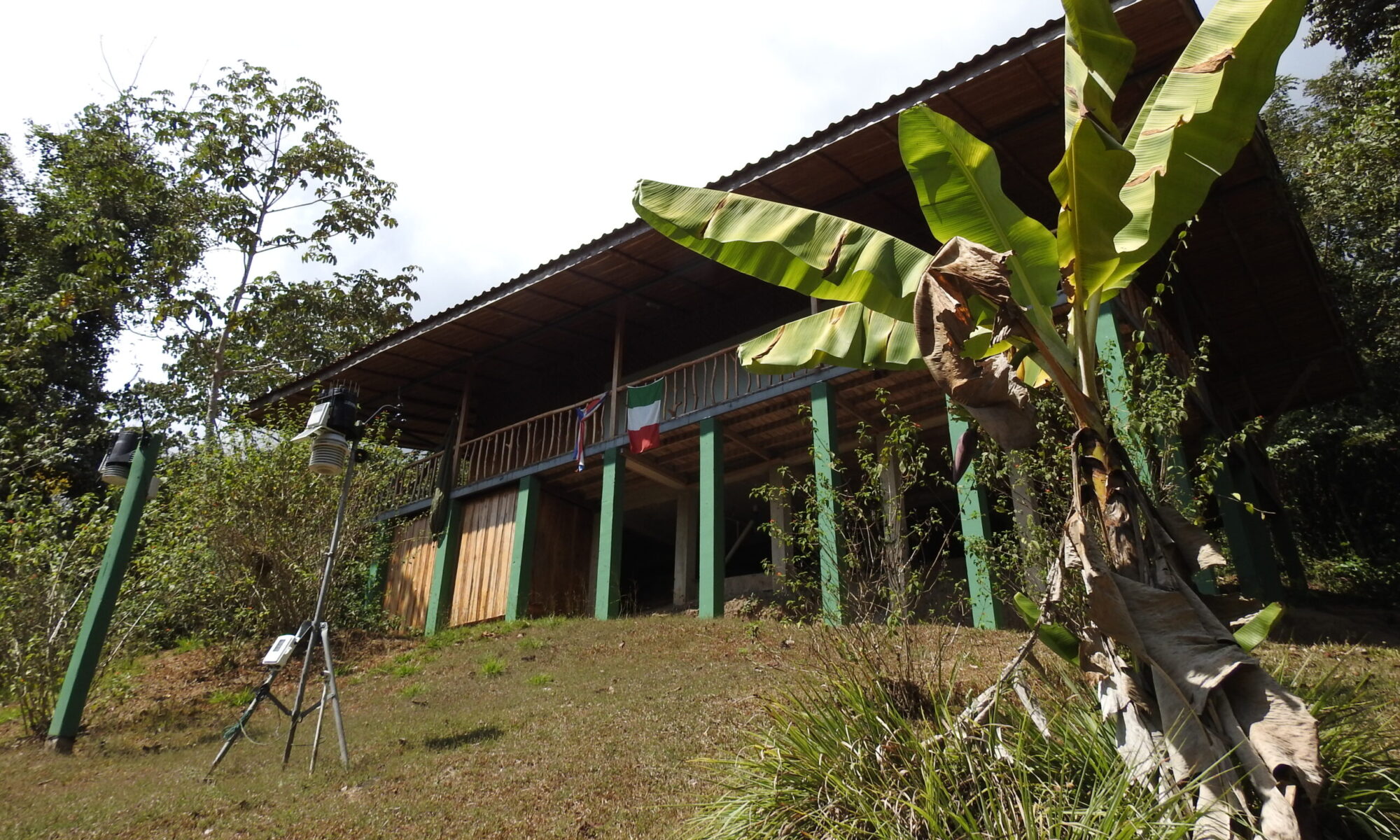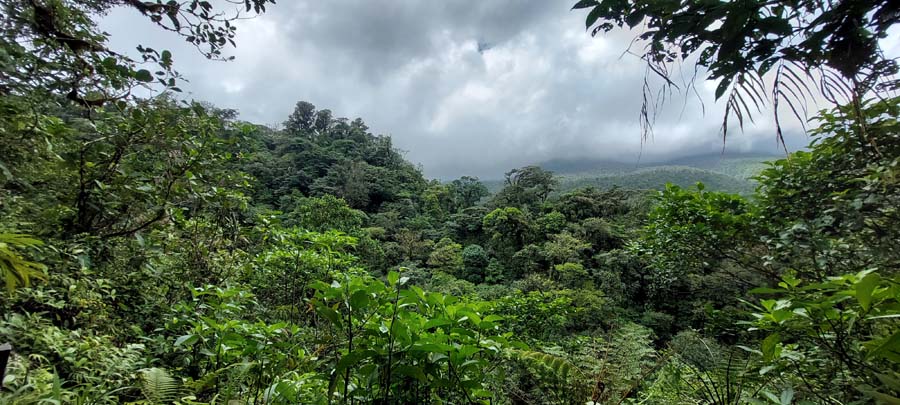June 2025 at the Karen Mogensen Reserve: a month of tropical rains and crucial data for climate research

The month of June 2025 concluded positively for the Karen Mogensen Reserve Meteorological Station, situated on the Nicoya Peninsula in Costa Rica. The early phase of the rainy season saw excellent performance from the automatic equipment and the webcam, which continues to deliver stunning images valuable for documenting the reserve’s microclimate. This success was made possible by technical interventions carried out in January 2025 by Luca Lombroso during the Italy–Costa Rica Field School, later finalized by Dario Sonetti and the local team at ASEPALECO, key partners in the scientific and environmental collaboration between Italy and Costa Rica.
Climatological Data: Intense Rainfall and Tropical Humid Climate
During the month, a total of 312.2 mm of rainfall was recorded, distributed fairly evenly across the three ten-day periods:
- 80.8 mm in the first decade,
- 99.4 mm in the second,,
- 132.0 mm in the third..
The wettest day occurred on June 23, with an impressive 62.2 mm of rainfall. Additionally, six days experienced precipitation above 20 mm. Throughout the month, the average relative humidity remained elevated at 91.8%, reflecting the typical tropical rainforest climate during the rainy season.
The daily average temperatures varied from 24.4°C to 27.8°C, with a monthly mean of 26.0°C. The peak temperature for the month reached 32.3°C on June 20th, while the lowest minimum temperature was 21.1°C on June 9th. Atmospheric pressure ranged between 1011.0 and 1013.8 hPa.
Global solar radiation remained elevated, recording a monthly total of 343.3 MJ/m² and a daily peak of 17.3 MJ/m². The maximum UV index (MED dose) reached 14.6, underscoring the importance of sun protection for both staff and visitors to the reserve.
A Growingly Vital Database for Research
As of June 2025, the station’s climatological series marks its eighth complete year of observations, with minimal interruptions, making it a valuable asset for studying climate change in tropical environments. Meteorological data, recorded every 10 minutes, are enriched by biological and naturalistic field observations. These data have been frequently requested by students and researchers from multiple universities across Costa Rica for climate and ecological studies.
Thanks to robust data collection and the scientific partnership between the Geophysical Observatory of DIEF UNIMORE and ASEPALECO, in-depth analyses and comparisons are in progress that will culminate in a scientific publication on the microclimate of the Karen Mogensen Reserve and its changes amid ongoing climate change.
The Italy–Costa Rica Meteorological, Climatic, and Biological Station serves not only as a hub for scientific research but also as a remarkable example of international collaboration, environmental education, and the preservation of tropical biodiversity.


